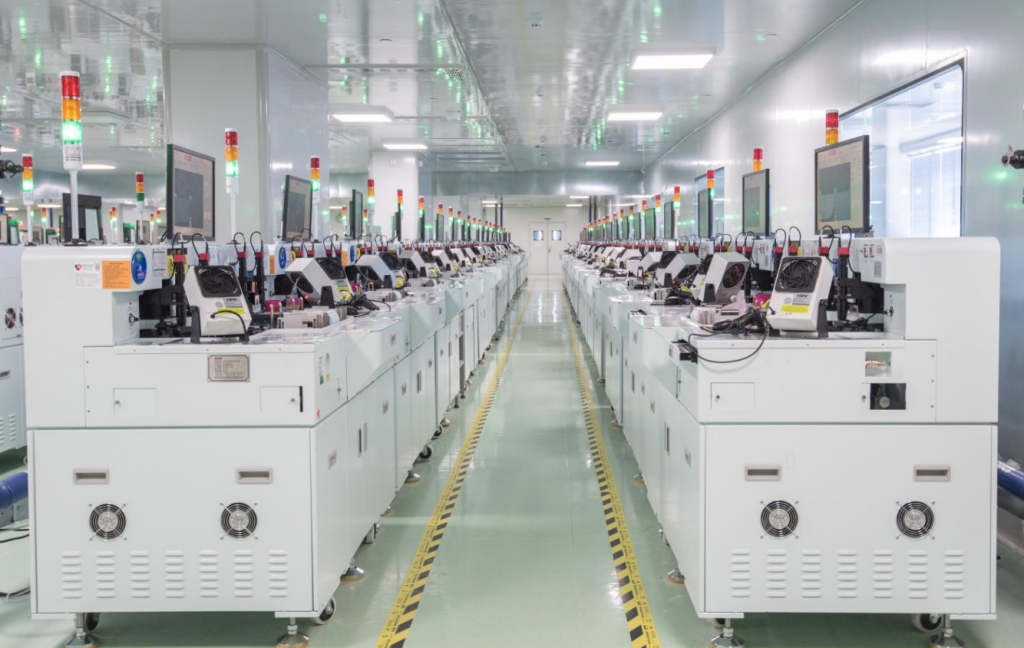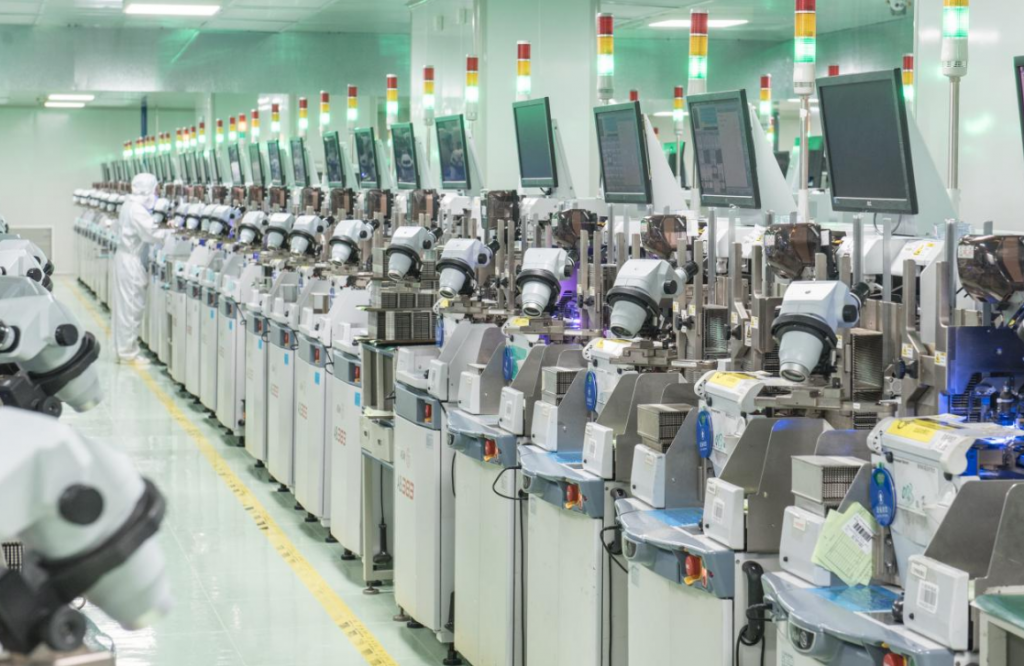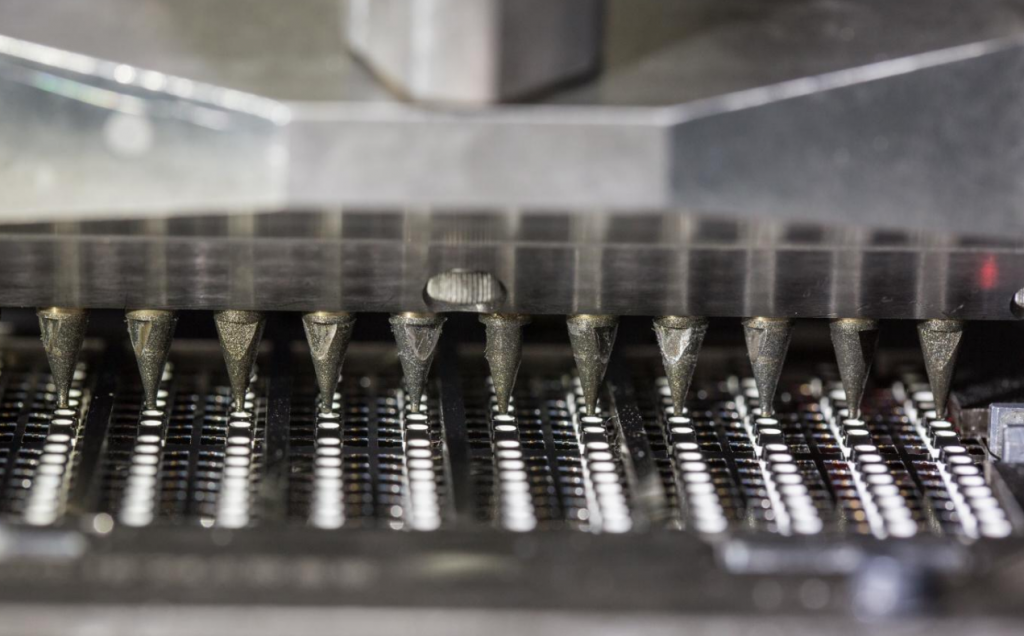LED packaging involves several common procedures that are performed to protect the LED chip, provide electrical connections, and enhance the overall performance and reliability of the LEDs. Here are the 9 common procedures involved in LED packaging, including die attach, wire bonding, encapsulation, lead frame trimming, lead forming, lens attachment, electrical testing, sorting and bin classification, and tape and reel packaging.
The LED chip is attached to a lead frame or substrate using a conductive adhesive or solder. The die attach process ensures proper electrical contact and thermal management.

Die attach lines at Kinglight LED production base located in Suzhou, China
Fine wires (usually gold or copper) are used to connect the LED chip to the lead frame or substrate. Wire bonding provides electrical connectivity between the chip and external contacts.

Kinglight production line for wire bonding of LED packaging
The LED chip, wire bonds, and other sensitive components are encapsulated with a protective material, such as epoxy resin or silicone. Encapsulation shields the chip from external elements and provides mechanical support.

Encapsulation at Kinglight LED packaging production lines
Excess lead frame material is removed by trimming to achieve the desired lead length and shape. This process facilitates subsequent assembly and electrical connections.
The leads or terminals of the LED package are shaped to match specific requirements, such as through-hole or surface-mount configurations. Lead forming ensures proper connection and mounting.
In some LED packages, a lens is attached to control the direction and distribution of light emitted by the LED chip. The lens can be transparent or may include specialized optics, such as reflectors or diffusers.
Packaged LEDs undergo electrical testing to verify their functionality and performance. Parameters such as forward voltage, forward current, luminous intensity, and color temperature are measured.
Packaged LEDs are sorted into different bins based on their electrical and optical characteristics. This categorization ensures consistent performance and enables manufacturers to meet specific customer requirements.

Kinglight LED Packaging-Sorting & Bin Classification
In many cases, the packaged LEDs are placed into tape and reel packaging (also known as carrier tape). The components are mounted on a continuous tape with pockets, allowing for automated handling during manufacturing and assembly processes.

Kinglight LED Packaging-Tape & Reel Packaging
These procedures may vary depending on the specific LED package type, manufacturing technology, and product specifications. LED manufacturers follow stringent quality control measures to ensure consistent performance and adherence to industry standards throughout the packaging process.